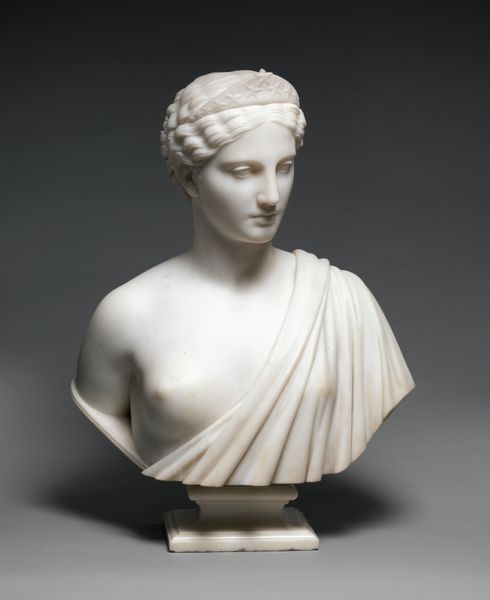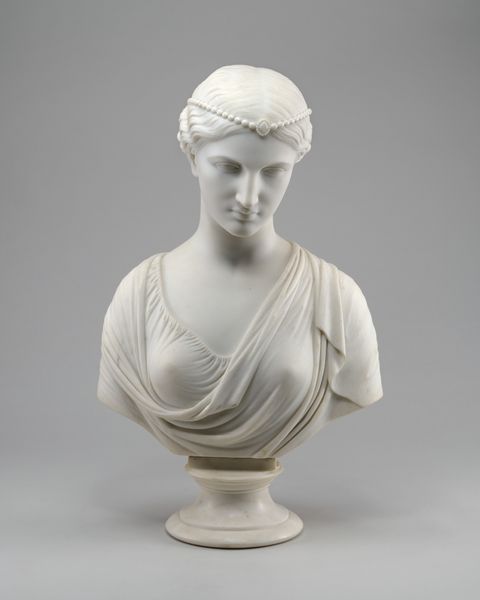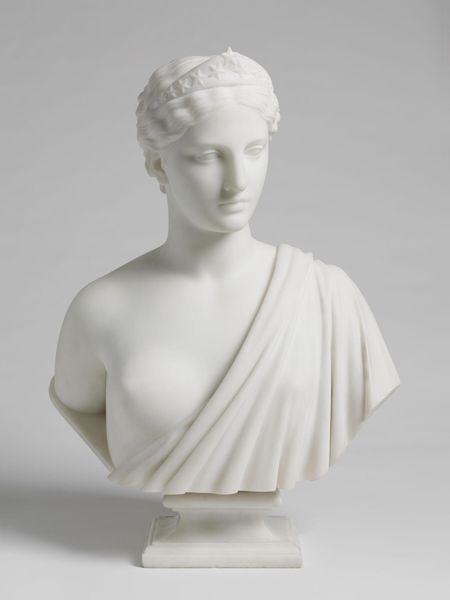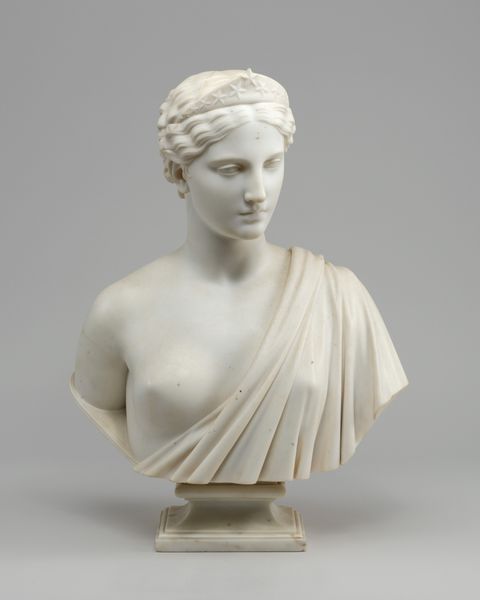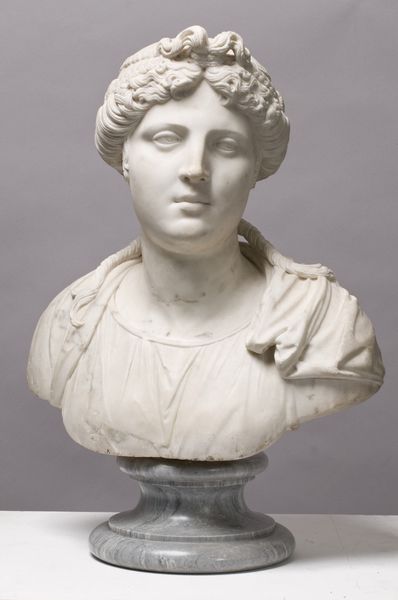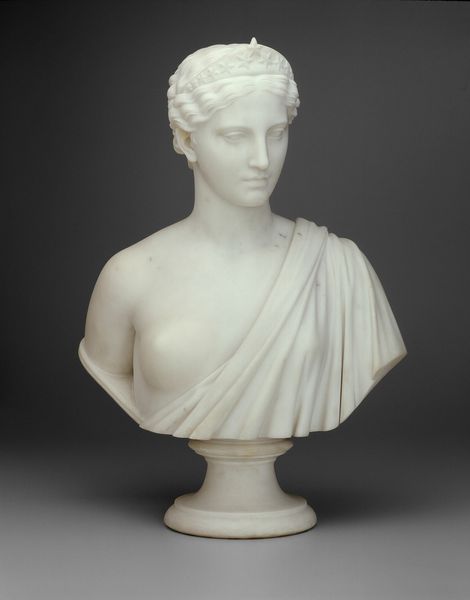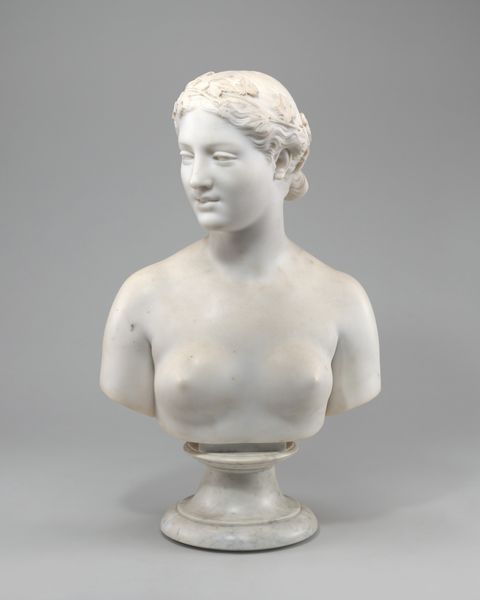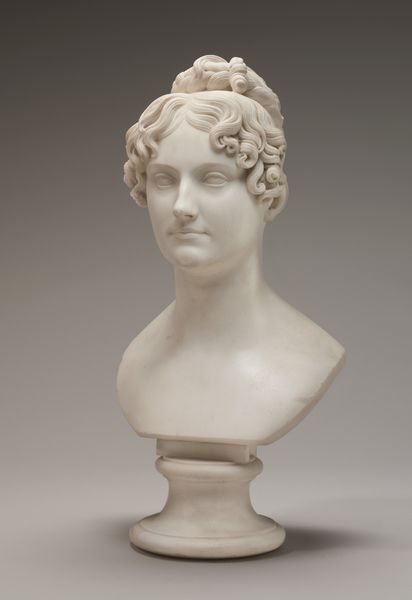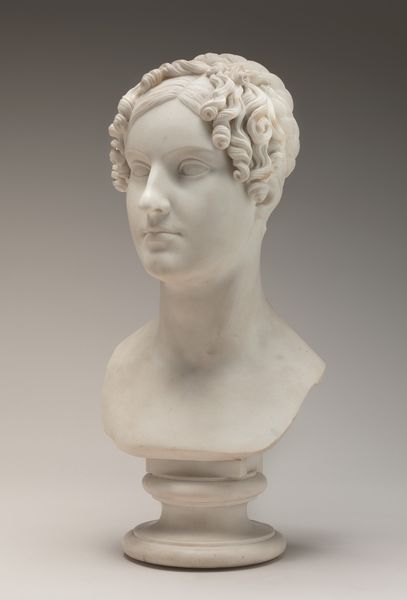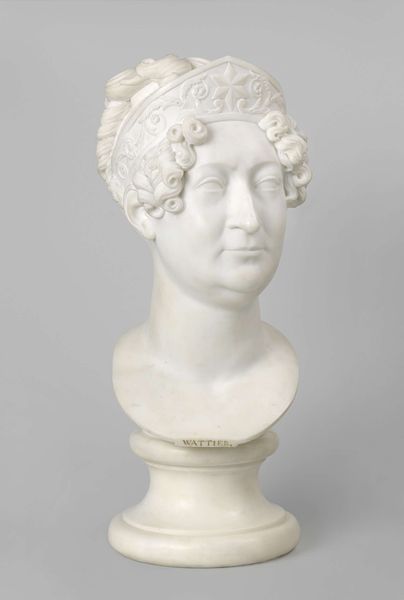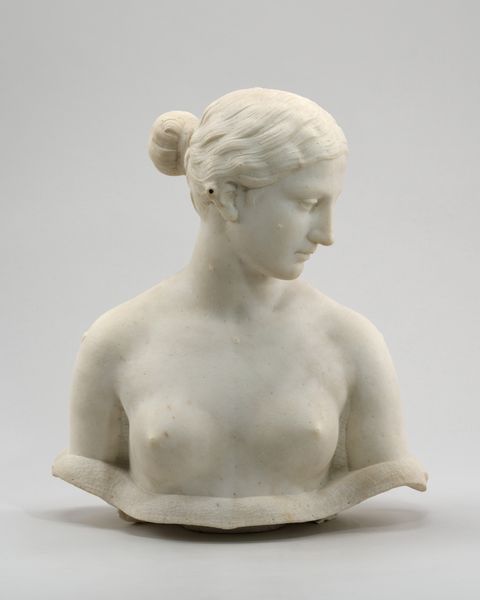
sculpture, marble
#
portrait
#
neoclacissism
#
sculpture
#
figuration
#
sculpture
#
decorative-art
#
marble
Dimensions: Overall (with base): 28 × 15 × 11 7/8 in. (71.1 × 38.1 × 30.2 cm)
Copyright: Public Domain
Editor: We're looking at "Rachel Fanny Antonina Le Despencer," a marble bust sculpted by John Bacon the Younger between 1815 and 1825. It's quite striking how the cool marble seems to convey both delicacy and a sense of formality. What can you tell us about it? Curator: This bust speaks volumes about the social and cultural expectations placed upon women of the British aristocracy during the Regency period. Marble, of course, links it immediately to ideals of classical beauty, popular among the elite. The sitter’s clothing, hairstyle, the very smoothness of the stone, all conform to Neoclassical tastes. Do you think this serves only to flatter the sitter, or might it say something else? Editor: I suppose it elevates her, aligns her with this classical ideal... maybe reinforces a certain power or status? It almost feels like a deliberate construction. Curator: Precisely. The sculpture isn't just about capturing a likeness; it's about presenting a carefully constructed image of class and respectability for public consumption. Such portraits reinforced existing power structures and class distinctions, showcasing the wealth and status of families like the Le Despencers. Think about where these sculptures were often displayed - in grand homes, meant to impress visitors. Editor: So, it's less about individual personality and more about representing a social position? Curator: In many ways, yes. The artist is essentially producing a commodity that bolsters the family's social standing. The museum display also influences this interpretation. Knowing it resides in the Met now, how does that shape your understanding of its purpose, compared to if it remained in the family’s ancestral home? Editor: That’s a good point! Now it's part of a larger art historical narrative, divorced from its original, purely familial context. It’s become an object to be admired rather than a symbol of a family’s lineage. Curator: Exactly. By analyzing the original social context and subsequent museum placement, we gain a much richer understanding of the artwork's meaning. Editor: I see it now. It’s fascinating how much a sculpture like this reveals about societal values and power dynamics, far beyond just its aesthetic qualities.
Comments
No comments
Be the first to comment and join the conversation on the ultimate creative platform.
